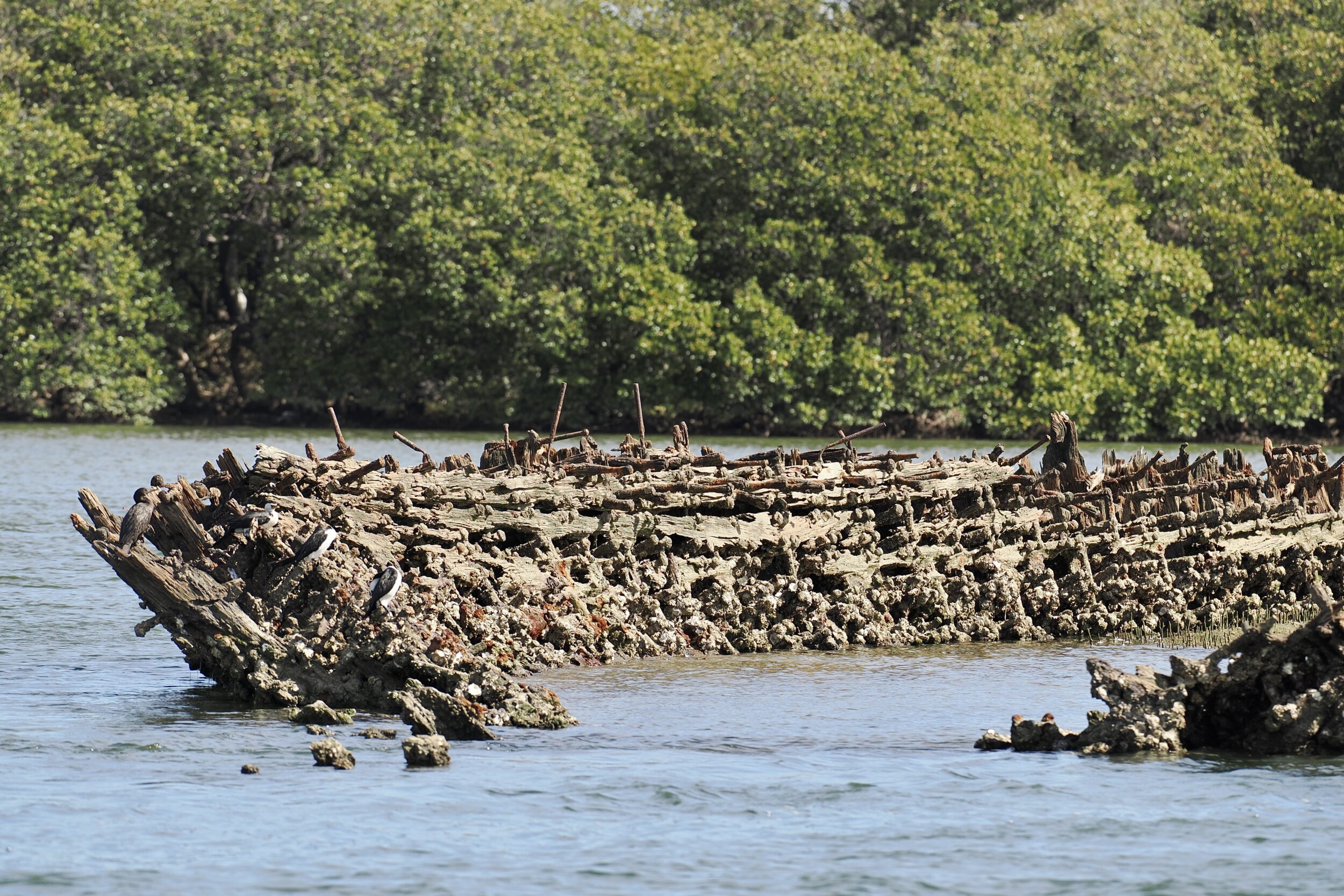The pictured vessel was dumped in the Garden Island Ships’ Graveyard between 79 and 115 years ago.
My hunch (which could be dead wrong) is that it once worked as a barge in Port Adelaide, and that its hull was mostly wooden.
The greater portion of its former mass is now gone.
However, it is likely that this wreck directly supports a larger number of living organisms than it ever did – several generations ago – as an “intact”, “working” ship.
If you zoom in and look closely, you’ll see evidence which supports this assertion.
The Garden Island Ships’ Graveyard sits within the Adelaide Dolphin Sanctuary,.
It also overlaps the Adelaide International Bird sanctuary, and is a prime destination for kayakers.
The Port River’s resident dolphins have oft been touted – locally, at least – as the world’s only such urban-resident (as opposed to urban-visiting) dolphin population.
To put it politely, that claim is overstated.
I know that Jacksonville in Florida, and both Bunbury and Mandurah in Western Australia also have “urban”, “resident” dolphins…and I very much doubt that there are only four such cities.
Still, Adelaide’s dolphin circumstance is unusual; most cities do not have resident dolphins.
As it happens, we were unlucky, dolphin-wise, on 07 March 2024, but Port River cruisers and kayakers do frequently encounter dolphins.
Click here to learn more about the Port River’s dolphins; their conservation status is rather less robust than that of the resident dolphins in Bunbury’s Koombana Bay and Mandurah’s Peel Inlet.
A likely key factor is the difference in water quality, although it appears that the “trend” in Port River water quality is now “improving, gradually” rather than “worsening, still”.
Port Adelaide’s waters are still far from pristine.
(photo is ©️ Doug Spencer, taken at 3. 55 pm on 07 March 2024)
